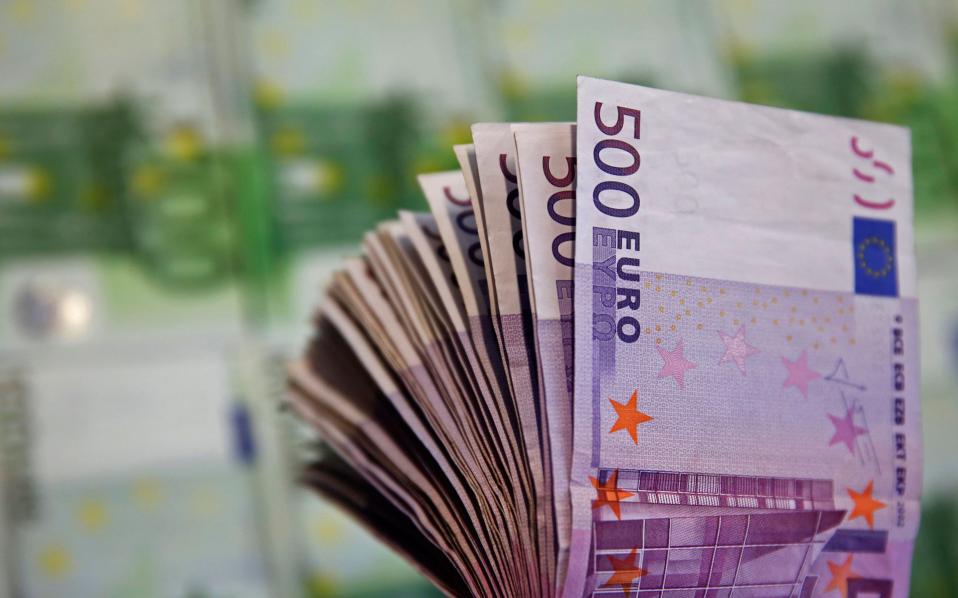Greece’s bailout costs could rise over life of loans, ESM says

Like a fine wine, Greece’s bailout could get more expensive as it ages.
The European Stability Mechanism has so far charged Greece about 1 percent on the funds released from the 86 billion-euro ($98 billion) bailout that Prime Minister Alexis Tsipras won in August. Those costs aren’t locked in for the life of the loan though, ESM chief financial officer Christophe Frankel said in an interview.
“We can’t guarantee that the rate will remain at such a low level,” Frankel said. “We know that what we charge today is not what we will charge tomorrow and of course is very different from what we may charge in five years or 10 years time.”
The prospect of “very different” interest rates adds an extra dimension to the challenges confronting Tsipras as he embarks on a second term in office. Unless he can get the Greek economy moving and the debt falling before European borrowing costs start to rise, his efforts at stabilizing the country could face an additional headwind.
“If market interest rates ever start to move up, we should be prepared for either new fiscal backlashes and/or new bargaining about the so-called additional service charges from the ESM,” said Carsten Brzeski, chief economist at ING-Diba in Frankfurt. “This is as good as it gets.”
Euro-area firewall
Created in 2012, the ESM was the euro area’s flagship effort to build a buffer between the currency zone and the sovereign debt crisis that at its height forced five of the bloc’s 19 nations to seek bailouts. The firewall fund borrows on behalf of the entire euro area and offers rescue funding for nations that have lost access to the markets.
Greece is a prime example. The country’s 10-year yields soared to 44 percent in 2012 and more recently to 19.6 percent in July, when it wasn’t clear if Tsipras would be able to secure another infusion of rescue funds. The debt was yielding 7.7 percent on Wednesday while similarly dated bonds issued by the ESM traded at 0.87 percent.
Bowing to bailout conditions gives Greece a way to access cash when its shut out of the market, and so far, low costs have been a consistent bailout perk. The ESM’s current rates are even lower than the price it pays to borrow on the long-term markets. The bailout fund sold 3 billion of 30-year bonds on Oct. 13 with an implied yield of 1.785 percent. Its short-term bills are currently trading at negative rates.
The loan charges are particularly low now because the European Central Bank has pushed rates to record lows and the initial mix of debt that the ESM uses to fund its bailout program was tilted toward short-term debt. Like most of the euro area’s bailout programs, Greece’s latest program began with a hefty lump sum payout – in this case a 26 billion-euro disbursement. The ESM used a mix of bill and bond sales to raise the cash, and it also issued floating-rate notes to be set aside for bank recapitalization.
Costs can change
Going forward, the shortest debt will be rolled over into a mix of longer-term debt. This is likely to push rates up, and market conditions also could see the ESM’s borrowing costs rise. At the same time, the funding costs will be lower than if the ESM were trying to borrow at terms that exactly matched the length of the loans it offers to Greece.
“From one day to another, the cost of funds can change,” Frankel said. “It does not change every day but it may change from time to time depending on new issuance or bonds coming to maturity.”
Greece’s loan fees on the new bailout are the same as the ESM charges to other countries that have received bailouts – so far, Spain and Cyprus. Older euro-area bailouts came from the ESM’s temporary predecessor, the European Financial Stability Facility. Both bailout funds are aiming for an average debt maturity of between five and eight years, the same range sought out by sovereign borrowers.
Frankel said bailout countries won’t be getting any rude surprises.
“We are very clear and very cautious in mentioning any rate, because there are a lot of reasons why the rate could go up in the future,” Frankel said. “It could also go down – for the time being, this is always what we have experienced by the way – but it could go up again in the future.”
[Bloomberg]





